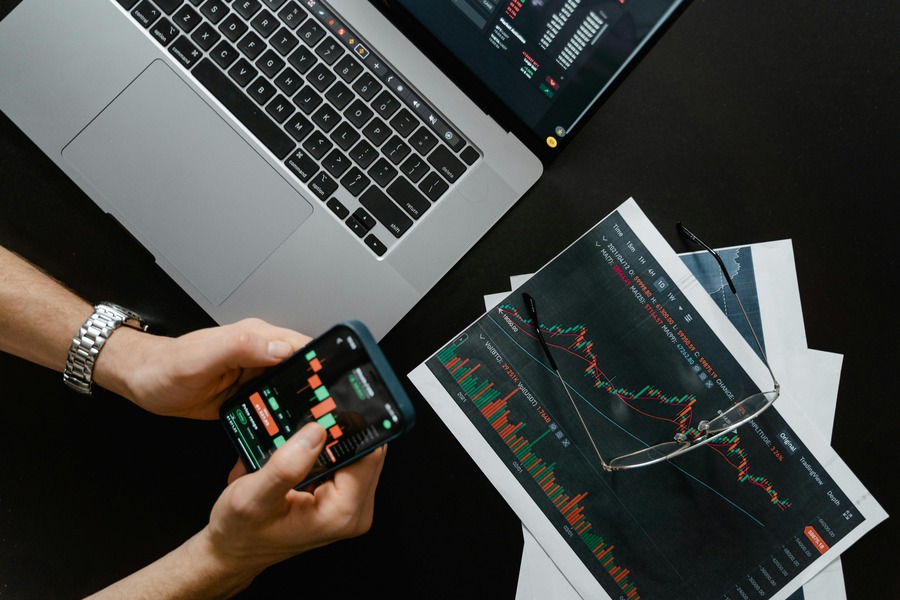The Importance of DYOR (Do Your Own Research)

Do Your Own Research (DYOR): Your Essential Guide to Navigating Crypto
In the dynamic and often unregulated landscape of cryptocurrency, the acronym DYOR – "Do Your Own Research" – is far more than just popular slang. It represents a fundamental mindset and a critical process that every participant, from novice investors to experienced traders, must adopt to navigate the market safely and make informed decisions. Given the decentralized nature of crypto, the prevalence of hype, and the potential for scams, taking personal responsibility for understanding investments is not just recommended; it's essential. This guide explores why DYOR is paramount and outlines a systematic framework for conducting effective research.
Why DYOR is Non-Negotiable in the Crypto Space
Several inherent characteristics of the cryptocurrency market underscore the critical importance of individual research:
- Decentralization & Limited Oversight: Unlike traditional finance with its established intermediaries and regulatory bodies, much of the crypto space operates with less direct oversight. This freedom fosters innovation but also means there are fewer safety nets; the responsibility falls largely on the individual.
- Prevalence of Scams and Misinformation: The ease with which new tokens can be created and marketed globally, combined with the allure of quick profits, makes crypto a fertile ground for scams, ranging from sophisticated Ponzi schemes to blatant rug pulls. Misleading information and coordinated hype campaigns are common. Thorough research is your primary defense. Learn more: How to Avoid Crypto Scams. A stark reminder is The Squid Game Crypto Scam, where hype around a popular show masked a fraudulent project.
- High Market Volatility: Crypto prices are notoriously volatile (Crypto Volatility). Understanding the fundamentals of a project helps build conviction during downturns or provides a basis for rational decision-making during periods of extreme market euphoria, preventing panic selling or FOMO-driven buying.
- Information Asymmetry: While blockchains offer transparency, project insiders or large holders may possess more information than the average retail participant. Diligent research helps bridge this gap, allowing you to assess information critically rather than relying solely on promotional materials or social media buzz.

The DYOR Framework: A Systematic Approach to Crypto Research
Effective DYOR isn't about randomly Browse websites; it's a structured process. Here’s a framework covering key areas:
Phase 1: Understanding the Project's Foundation
Start by examining the core documents and the team behind the project.
- The Whitepaper Deep Dive: This is often the foundational document outlining the project's vision. A strong whitepaper should clearly articulate:
- Problem & Solution: What specific problem does the project address? Is it a real problem? How does the proposed solution work, and why is blockchain necessary?
- Technology Explained: Details on the underlying Blockchain technology, consensus mechanism, architecture, and any unique technical innovations. Avoid overly complex jargon without clear explanations.
- Tokenomics: How the native token functions within the ecosystem (see Phase 2).
- Use Case & Target Market: Who is the project for, and how will it be used?
- Team Introduction: Information about the core team members.
- Roadmap: Clear, realistic milestones for development and future goals.
- Red Flags: Vague language, grammatical errors, plagiarism, unrealistic promises, lack of technical depth.
- Investigating the Team: The credibility of the founding team is paramount.
- Identity & Transparency: Are the core team members public? Anonymous teams present a significant risk, lacking accountability. Verify identities if possible.
- Experience & Track Record: Do team members have relevant experience in blockchain, software development, finance, or the specific industry they're targeting? Check LinkedIn profiles, GitHub contributions, and past project involvements.
- Advisors & Backers: Are there reputable advisors or venture capital firms involved? Verify these connections.
Phase 2: Assessing Viability and Community
Look beyond the initial pitch to gauge the project's economic model and social health.
- Tokenomics Analysis ("Token Economics"): This is crucial for understanding potential value and sustainability.
- Supply: Is the total supply fixed (Bitcoin-like scarcity), inflationary (new tokens constantly created), or deflationary (tokens burned)? How does this impact potential value?
- Distribution: How were/are tokens allocated? Was there a fair launch, or do founders/early investors hold a disproportionately large share (potential dump risk)? Are there vesting schedules for team/investor tokens?
- Utility: Does the token have a clear and necessary purpose within the ecosystem (e.g., governance rights, staking rewards (Crypto Staking), platform fee payments, medium of exchange)? Or does it feel artificially tacked on? Tokens without real utility struggle long-term.
- Community & Ecosystem Health: A vibrant, engaged community is often a positive sign.
- Social Channels (Discord, Telegram, Twitter, Reddit): Assess the quality of discussion. Is it focused on technology, development, and constructive feedback, or primarily on price speculation ("wen moon?") and hype? Beware of channels filled with bots or overly aggressive marketing.
- Developer Activity: Check the project's GitHub repository. Is there consistent, meaningful code development activity? Stagnant repositories can be a red flag.
- Partnerships & Integrations: Verify claimed partnerships by checking announcements from both parties. Look for actual integrations or collaborations that add real value to the ecosystem. Fake partnerships are a common scam tactic.
- Market Sentiment Check: Gauge how the broader market perceives the project.
- Social Listening: Monitor discussions on platforms like Twitter and Reddit.
- Sentiment Tools: Platforms like Santiment or LunarCrush aggregate social data but use them cautiously – sentiment can be easily manipulated or driven by short-term factors. Consider the Crypto Fear And Greed Index For Beginners for overall market mood context.

Phase 3: Technical & On-Chain Validation
Dig into the technical aspects and objective blockchain data.
- Technology Review: Does the underlying technology seem sound and feasible? Is it genuinely innovative, or relying on buzzwords? Has the code (especially smart contracts) been audited by reputable security firms? Read audit reports if available – they often highlight potential risks even if they don't guarantee safety.
- On-Chain Data Exploration: Use blockchain explorers (e.g., Etherscan for Ethereum & EVM chains, Solscan for Solana) and analytics platforms (e.g., Glassnode, Nansen, Dune Analytics) to gather objective data:
- Holder Distribution: Are tokens concentrated in a few wallets ("whales"), posing a manipulation or dump risk?
- Transaction Volume & Activity: Is the network genuinely being used? Are transactions meaningful, or just wash trading?
- Smart Contract Interactions: Are users actually engaging with the project's dApps or features?

Phase 4: Considering the Broader Context
Place the project within the larger market and your personal strategy.
- Market Position & Competition: Identify competitors. What is this project's unique selling proposition? Does it have a sustainable competitive advantage?
- Regulatory Awareness: Consider the potential regulatory risks. Is the token likely to be classified as a security in key jurisdictions? Is the project operating in a legally grey area?
- Personal Alignment: Does this investment fit your overall portfolio strategy, risk tolerance, and belief in the project's long-term vision? Don't invest just because something is hyped.
Essential Tools for Your DYOR Toolkit
Effective research utilizes various resources:
- Primary Sources: Project Website, Whitepaper, Official Blog/Announcements, Team LinkedIn Profiles.
- Code & Development: GitHub Repositories.
- Community Hubs: Official Discord, Telegram, Twitter, Reddit forums (e.g., r/CryptoCurrency), Bitcointalk forums.
- Market Data: CoinMarketCap, CoinGecko.
- Blockchain Explorers: Etherscan, BscScan, Solscan, etc. (depending on the chain).
- On-Chain Analytics: Glassnode, Nansen, Dune Analytics, Token Terminal.
- Sentiment Analysis: Santiment, LunarCrush.
- Security Audit Reports: Look for audits published by firms like CertiK, Trail of Bits, OpenZeppelin, ConsenSys Diligence.
- Reputable Crypto News: CoinDesk, The Block, Decrypt, CryptoSlate (cross-reference information).
Staying Updated: DYOR is an Ongoing Process
Conducting initial research is just the beginning. The crypto landscape changes constantly:
- Follow Project Updates: Keep track of development progress, roadmap execution, and official announcements.
- Monitor News & Regulations: Stay informed about broader market trends, technological breakthroughs, and evolving regulatory actions that could impact your holdings.
- Re-evaluate Periodically: Your initial investment thesis might change based on new information or market conditions. Regularly revisit your research and assumptions.
- Engage with Communities (Critically): Continue monitoring community discussions but maintain a critical perspective.

Conclusion: Empower Yourself Through Research
In cryptocurrency, knowledge truly is power – and protection. "Do Your Own Research" (DYOR) is the indispensable process of critically evaluating projects, understanding risks, and making informed decisions rather than relying on hype, rumors, or unsubstantiated claims. It involves scrutinizing the project's foundation, team, tokenomics, technology, community, and market context. While DYOR requires time and effort, it significantly reduces your chances of falling prey to scams and helps build the conviction needed to navigate market volatility. Embrace skepticism, verify claims, utilize available tools, and never stop learning. This commitment to research is the cornerstone of responsible and potentially successful participation in the crypto ecosystem. For those just starting, our Crypto For Beginners guide provides a helpful entry point.







